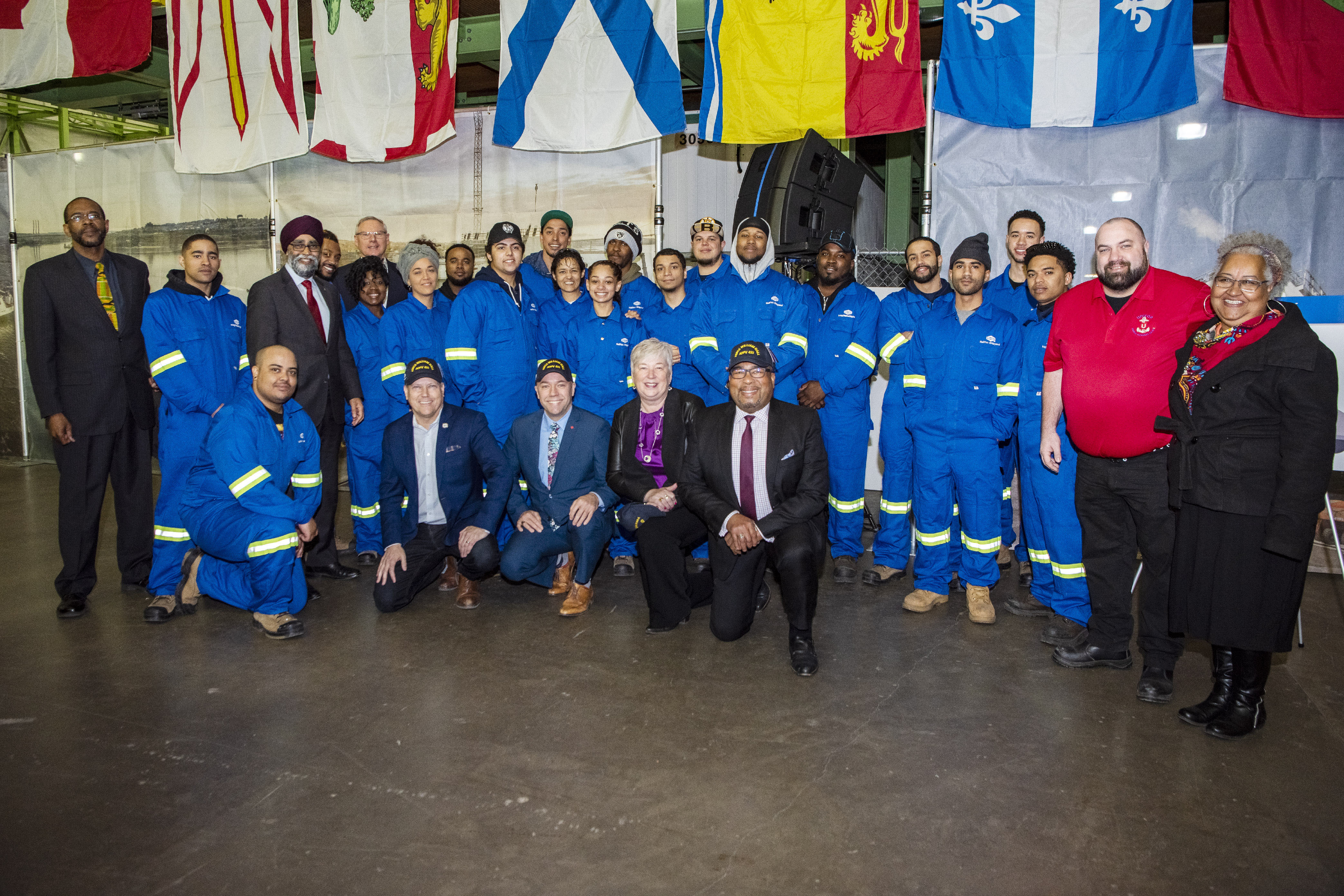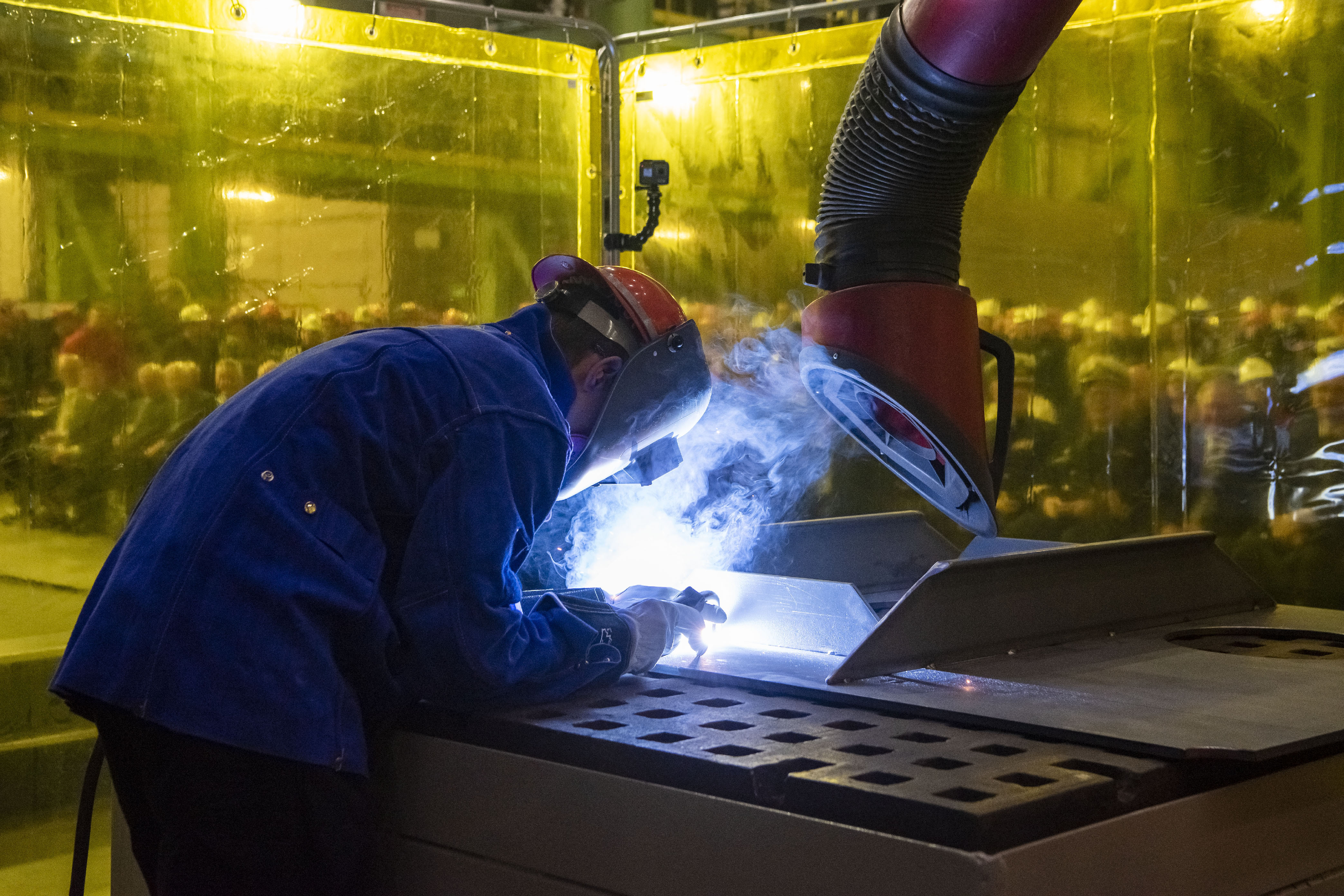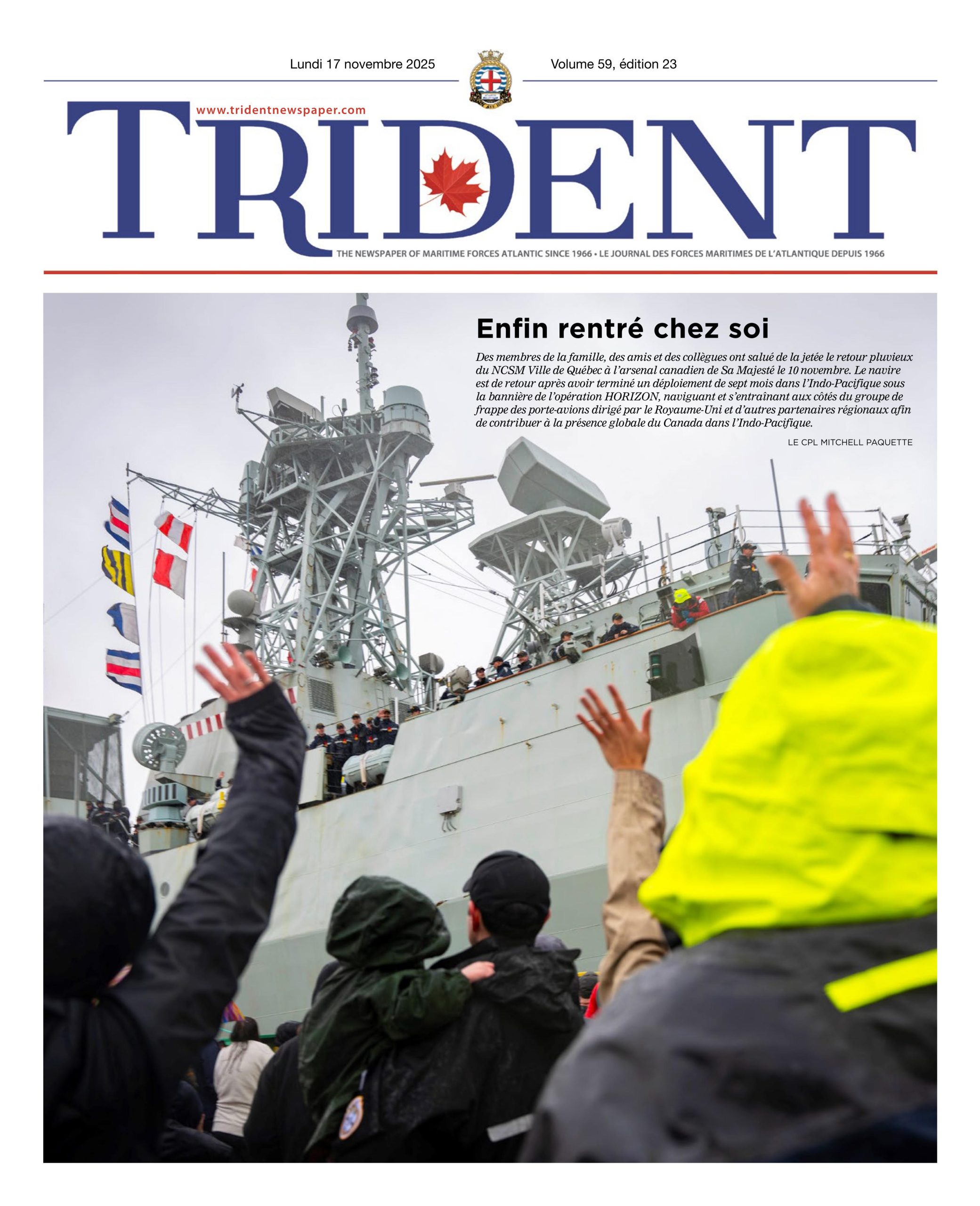
MONA GHIZ, MARLANT PA
Ceremony marks milestones in AOPS construction
Par Ryan Melanson,
L’équipe du Trident
The Government of Canada and Irving Shipbuilding marked the latest milestone of the National Shipbuilding Strategy on May 3 with the start of construction on the future HMCS William Hall, the fourth of the Royal Canadian Navy’s future fleet of Arctic and Offshore Patrol Ships (AOPS).

MONA GHIZ, MARLANT PA
A ceremony was held inside the Assembly Hall at Irving’s Halifax Shipyard, with the Honourable Harjit Sajjan, Minister of National Defence, and RAdm Art McDonald, Deputy Commander RCN, attending, along with a number of other government, CAF, and industry representatives.
With hundreds of his colleagues looking on, Shipyard apprentice Connor Warren made the first welds as part of the construction of the future ship.
Minister Sajjan described the progress of AOPS construction so far as evidence that the National Shipbuilding Strategy has revitalized the marine industry in Canada and led to new Canadian innovations. This will all lead to a strong and modern fleet of new RCN warships and Canadian Coast Guard vessels, he said.
“We remain firmly committed to the Strategy, and will continue to work closely with our shipbuilding partners to position it for success now and into the future.”
Like the other ships in its class, the fourth AOPS is named after a Canadian naval hero. Petty Officer William Hall was a sailor aboard HMS Shannon in 1857 when crew from the ship provided support to the British Army during the relief of Lucknow. Hall received the Victoria Cross in 1859 for his role in that battle, breaching an important wall as part of a 24-pounder howitzer crew despite sustaining serious injuries.
Hall was the first Nova Scotian and the first person of African descent to receive the VC. A number of young shipbuilders who have been working at the shipyard through Irving and NSCC’s Pathways to Shipbuilding – African Nova Scotian Program were front and centre at the ceremony to see work begin on the ship.
And on the same day that construction began on the future William Hall, Irving Shipbuilding also marked the latest step in the construction of the second AOPS, the future HMCS Margaret Brooke. Staff moved the bow section of the ship outside of the Assembly Hall on the afternoon of May 3, joining it with the centre and stern mega-block sections to complete structural assembly of the vessel on land.
Crews will work in the coming weeks to fully join the three components together before continuing with further outfitting of the ship.
“Transporting the bow mega-block and joining it with the centre and stern mega-blocks is a significant engineering feat and milestone for the Arctic and Offshore Patrol Ship program,” said Irving Shipbuilding President Kevin McCoy, noting that plans are to launch Margaret Brooke this fall to begin the final phase of construction with the ship in the water, ahead of sea trials next year.
As for the lead ship in the class, HMCS Harry DeWolf, Minister Sajjan and Irving Shipbuilding said things are still on schedule, with delivery to the RCN planned later this summer. In total, six AOPS will be delivered to the Navy from Irving Shipbuilding, with the final ship expected to be delivered in 2024.
The AOPS were designed to give the RCN increased capability when patrolling Canada’s north, enhancing CAF presence in the Arctic and asserting Arctic sovereignty. The Harry DeWolf-class will also be fully capable of operating internationally, including as part of humanitarian assistance and disaster relief missions.
“We’ve got missions all over the world and this is going to be an important new tool to support those missions. I know the Navy is excited to get these ships,” Minister Sajjan said.






